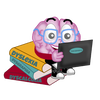Dyslexia and Autism are two neurodevelopmental conditions that have been extensively examined by researchers. Although separate, studies show that they often co-occur, with individuals having a diagnosis for both conditions.One of the most notable similarities between Dyslexia and Autism lies in their shared impact on verbal communication and both are linked to difficulties with sensory processing.
Dyslexia is characterized by difficulty with reading, writing, or communicating. While individuals with Autism often have challenges with speech, communication, language, and interpreting nonverbal cues. Suggesting an overlap in the affected areas of the brain between these two conditions.
0 Comments
Learn how to tailor IEPs for your child's success and maximize their learning potential with the comprehensive test of phonological processingContributed by April Rehrig The CTOPP helps evaluate phonological processing as a prerequisite for reading fluency. This instrument originally published in 1999 was updated in 2013. It’s intended for ages 4:0- 24:11 and takes approximately 40 minutes to complete. Both the CTOPP and the CTOPP-2 are designed to assess phonological awareness, phonological memory, and rapid naming. The CTOPP-2 is commonly used by school psychologists and Speech and Language Therapists for special education assessments. Note, there is no advanced training requirement in the assessment and interpretation of this measure (general and special education teachers may administer this test).
|
LEXIA LEARNERS LOUNGE
AuthorJess Arce is a homeschool mom of four, a tutor for children & adults who struggle with Dyslexia & Dysgraphia and an all around entrepreneur. She is passionate about helping others understand dyslexia. |
